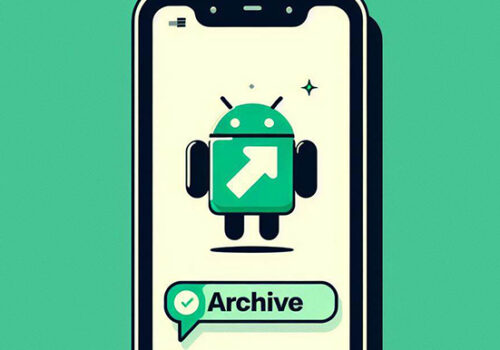What is a Customer Engagement Platform? + Best of 2023
A customer engagement platform is a single piece of software that tracks, manages, and enables interactions with your prospects and customers. It integrates with customer engagement tools like email, direct messaging, chatbots, and more.
Think of a customer engagement platform like a command center. You can access all your communication channels and engagement tools from it and use them as building blocks for creating automated, omnichannel workflows. Best of all, you can activate and manage these workflows without leaving your platform.
How a customer engagement platform works
Consider a scenario where a user named John Doe registers for an account on the desktop version of a food delivery application. Upon receiving the account confirmation email, he is encouraged to download the mobile app, but he refrains from doing so. Despite this, he proceeds to place an order and provides his mobile number for the driver’s contact.
Subsequently, when prompted to rate his experience, John gives a three-star rating citing a delayed delivery. In response, an apology message is sent to him, accompanied by a coupon for his next order, which is accessible on his dashboard.
However, John does not place another order that week. Recognizing the higher frequency of orders via mobile, a decision is made to send John an SMS encouraging him to download the app, which he does.
In this example, a customer interaction (or inaction) in one channel becomes a condition to trigger an event either through the same channel or a different one. Different tools enable different interactions: email automation, call masking to keep phone numbers private, survey forms, dashboard notifications, and programmable messaging.
Typically, creating omnichannel workflows of this nature involves managing multiple applications. A customer engagement platform streamlines this process by enabling the orchestration of these interactions within a singular platform.
Instead of resorting to individual SMS messaging apps, SMS functionality is seamlessly integrated into the platform. Similarly, instead of directly transmitting phone numbers to a call masking tool, a voice API is utilized. By ensuring the seamless integration of these interactions, data silos are eliminated, resulting in cohesive and unified customer experiences.
Consider a scenario where a user named John Doe registers for an account on the desktop version of a food delivery application. Upon receiving the account confirmation email, he is encouraged to download the mobile app, but he refrains from doing so. Despite this, he proceeds to place an order and provides his mobile number for the driver’s contact.
Subsequently, when prompted to rate his experience, John gives a three-star rating citing a delayed delivery. In response, an apology message is sent to him, accompanied by a coupon for his next order, which is accessible on his dashboard.
However, John does not place another order that week. Recognizing the higher frequency of orders via mobile, a decision is made to send John an SMS encouraging him to download the app, which he does.
This sequence exemplifies how customer interactions, or lack thereof, across various channels serve as triggers for subsequent events, be it through the same channel or a different one. Different tools facilitate these interactions, including email automation, call masking for privacy, survey forms, dashboard notifications, and programmable messaging.
Typically, creating omnichannel workflows of this nature involves managing multiple applications. A customer engagement platform streamlines this process by enabling the orchestration of these interactions within a singular platform.
Instead of resorting to individual SMS messaging apps, SMS functionality is seamlessly integrated into the platform. Similarly, instead of directly transmitting phone numbers to a call masking tool, a voice API is utilized. By ensuring the seamless integration of these interactions, data silos are eliminated, resulting in cohesive and unified customer experiences.
Are CRMs, CDPs, and CXMs customer engagement platforms too?
Today’s customer engagement platforms have roots in diverse software origins. Many trace back to traditional customer relationship management (CRM) systems, initially developed for data management. Over time, these systems have evolved into cloud-based, analytics-driven platforms that seamlessly integrate with other applications.
Another lineage of engagement systems stems from customer data platforms (CDPs). CDPs excel at real-time data collection from various sources, consolidating it into comprehensive customer profiles, and distributing this data to marketing, sales, customer support, and analytics tools.
Modern CRMs and CDPs encompass the functionalities of customer engagement platforms but primarily act as data activators by transmitting data to downstream tools. However, the most advanced iteration of customer engagement platforms goes beyond this, activating data directly within the software itself.
Additionally, there are customer experience management (CXM) platforms, which specialize in analyzing feedback and sentiments to enhance customer experiences. These platforms can be viewed as engagement platforms with a narrower scope and objective.
Indeed, CRMs, CDPs, and CXMs represent early forms of customer engagement platforms. Looking ahead, we envision a unified platform where applications for contact centers, marketing automation, sales automation, and more leverage a shared communications and customer data infrastructure. This unified approach promises to streamline the management of the entire customer journey and lifecycle.
What to look for in a customer engagement platform
- Cross-channel tracking and attribution: A customer engagement platform aggregates first-party data from diverse channels and attributes outcomes to interactions across those channels. For instance, it can track how a user, “X,” reached the landing page via an Instagram ad.
- Single customer view: Seek functionalities enabling the recognition of customers across multiple channels and the consolidation of their interaction data into a unified profile, known as a single customer view. This facilitates the creation of customer segments for personalized campaigns. For instance, if a user consistently orders coffee through a food delivery app on Mondays but doesn’t do so on a particular Monday, the platform can trigger push notifications offering discounts or promotions for alternative cafes.
- Integrations: APIs for communication, customer support, marketing, product enhancement, and sales tools empower the development of an omnichannel customer engagement ecosystem. Vertical-specific apps, such as a personal stylist chatbot for fashion retailers, can then be seamlessly integrated into the platform.
4 best customer engagement platforms for 2023
1. Twilio Engage:
Twilio Engage aggregates data from various sources such as apps, websites, and CRMs, along with tools for advertising, analytics, and email marketing. It centralizes this data into unified customer profiles, enabling personalized engagement across different touchpoints and devices using flexible communications APIs.
Key Features:
Ensures data accuracy through cleansing and validation processes.
Updates customer profiles in real-time for immediate insights.
Offers over 400 out-of-the-box integrations with diverse tools for tailored campaigns.
Target Audience:
Marketers, developers, sales professionals, and customer-facing teams.
2. Zendesk Sunshine:
Zendesk Sunshine is a cloud-based CRM that streamlines customer conversations by integrating with messaging platforms like Slack and WhatsApp, as well as business systems such as Shopify and Help Scout.
Key Features:
Allows interface customization without coding and enables app development with the Zendesk app framework.
Features a built-in chatbot for supporting customer service representatives.
Provides APIs for seamless integration with over 1,200 apps for customer support ticketing, sales CRMs, and live chat.
Target Audience:
Customer service and sales teams.
3. Qualtrics XM:
Qualtrics XM focuses on experience management by identifying poor customer experiences through the collection, analysis, and unification of conversational data. It then offers actionable recommendations to address issues proactively.
Key Features:
Supports conversational data from 27 channels and 128 data sources, including apps, websites, social media, surveys, and IoT devices.
Integrates with various analytics and customer engagement tools, including Twilio for feedback collection via SMS and WhatsApp.
Incorporates predictive analytics to identify opportunities for enhancing customer experience.
Target Audience:
Marketing, customer service, product management, and HR teams.
4. Zoho CRM Plus:
Zoho CRM Plus enables monitoring and management of customer experiences by providing real-time notifications on customer interactions. This allows for prompt responses to address issues or capitalize on sales opportunities.
Key Features:
Features an AI assistant for trend prediction, sentiment analysis, and campaign optimization.
Integrates seamlessly with numerous Zoho and third-party apps, including mobile apps for project management, CRM, and social media monitoring.
Supports offline record management on mobile devices, allowing for uninterrupted workflow.
Target Audience:
Businesses across various industries, including retail, F&B, financial services, media, telecommunications, and healthcare.





